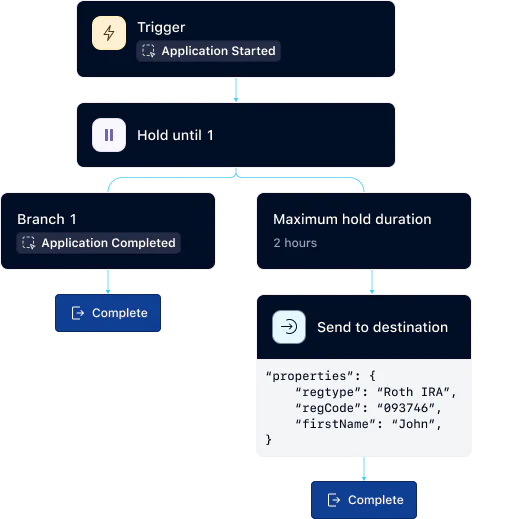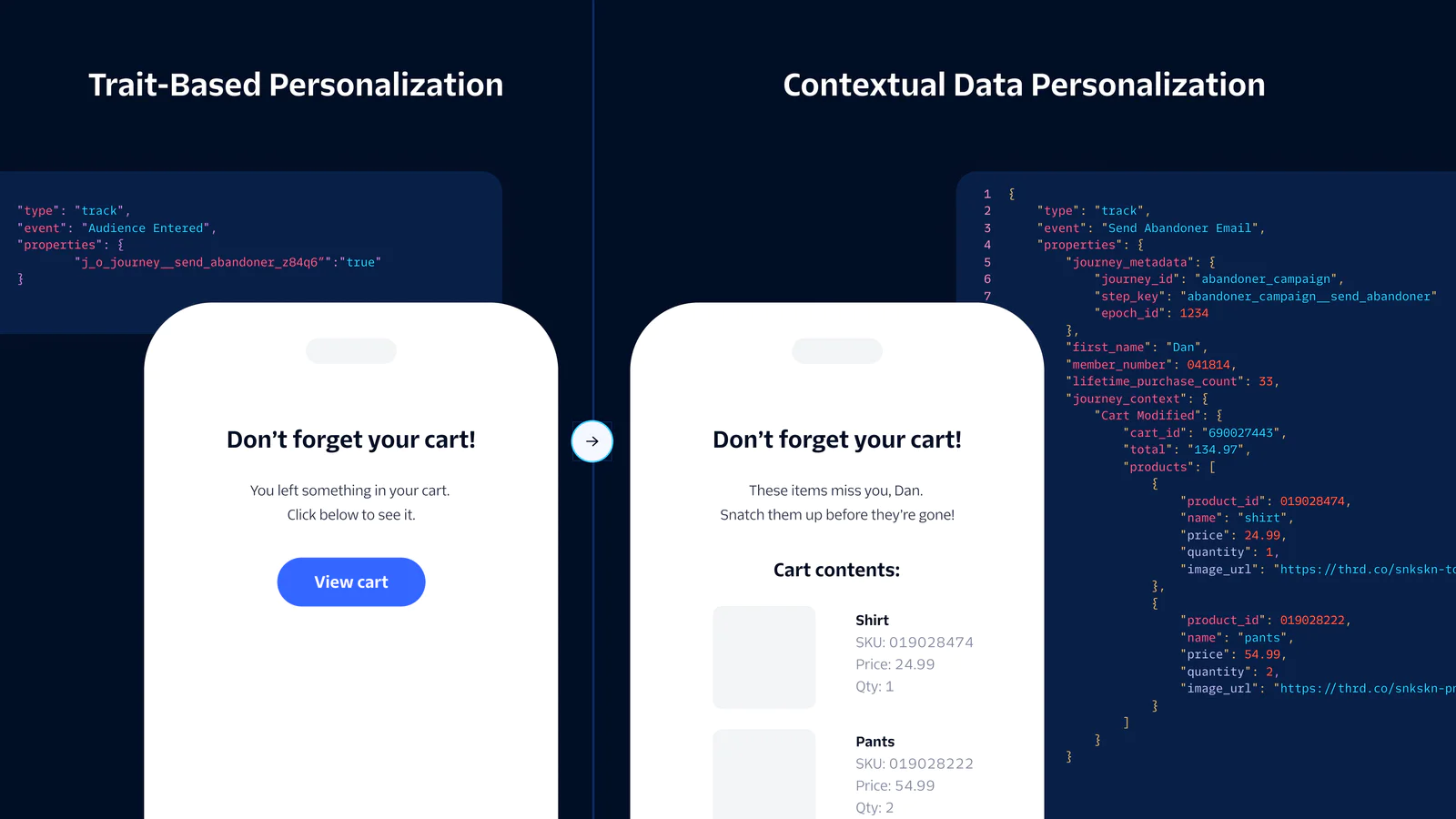Over the past few years, the kinds of B2C and B2B use cases businesses have sought our help in solving have grown in variation and complexity.
Today’s companies need to be able to deliver much more precise, scalable, and context-rich personalization in real time to reach every person with the most relevant message at the best time and on the right channel for conversion. Attempting to do this typically ties up engineering resources for months on end or requires teams to reinvent the wheel with every new requirement or activation channel.
We heard you loud and clear. We feel your pain. And we have fully redesigned the front and backend of our Journeys architecture inside of Twilio Engage to help you solve these evolving challenges.
Building on top of our new Journeys architecture, we’ve released a number of new features to public beta that unlock highly personalized, real–time transactional customer journeys for businesses and evolve Engage into a rich data orchestration layer within the Twilio Segment customer data platform (CDP).
Event-Triggered Journeys
We’ve all heard the phrase: time is money. When it comes to some transactional use cases that’s literally true.
Timing and messaging matter when money and trust is on the line.
Sophisticated, yet common, abandonment use cases — like shopping cart abandonment, form applications, onboarding flows, or trial-to-paid account journeys — require more than just the targeted audience lists that power most traditional marketing campaigns. They require intent signals and event-triggered architecture to properly enroll members and make decisions.
For example, if you want to send a message to someone who left items in their online cart, a system needs to store and manage what those items are and make them available for personalization.
With Event-Triggered Journeys, Segment dynamically manages the state of a “cart” without needing developer support. Plus, resetting engagement timers and support for simultaneous Journey entries ensures messagings are not only based on the most recent activity but also prevents interruptions during the user's shopping process.
Importantly, Segment is schemaless, so this pattern scales to whatever your business requirements and data are — meaning it’s also highly adaptable, supporting use cases beyond retail.
For a financial services company, a “cart” might involve automatically managing the state of multiple credit card applications and sending a personalized message for each if they’re abandoned. Event-Triggered Journeys will make this possible.



